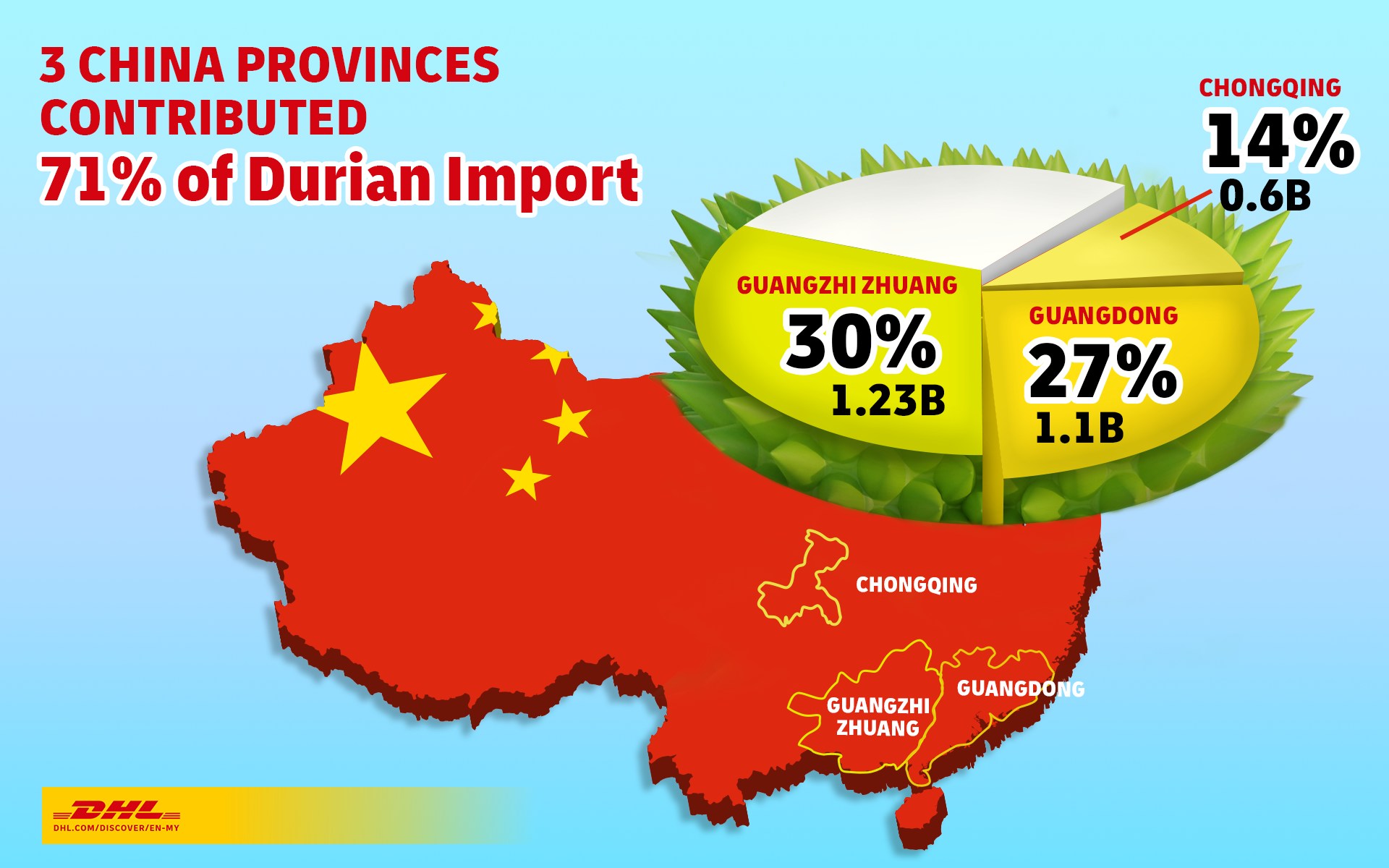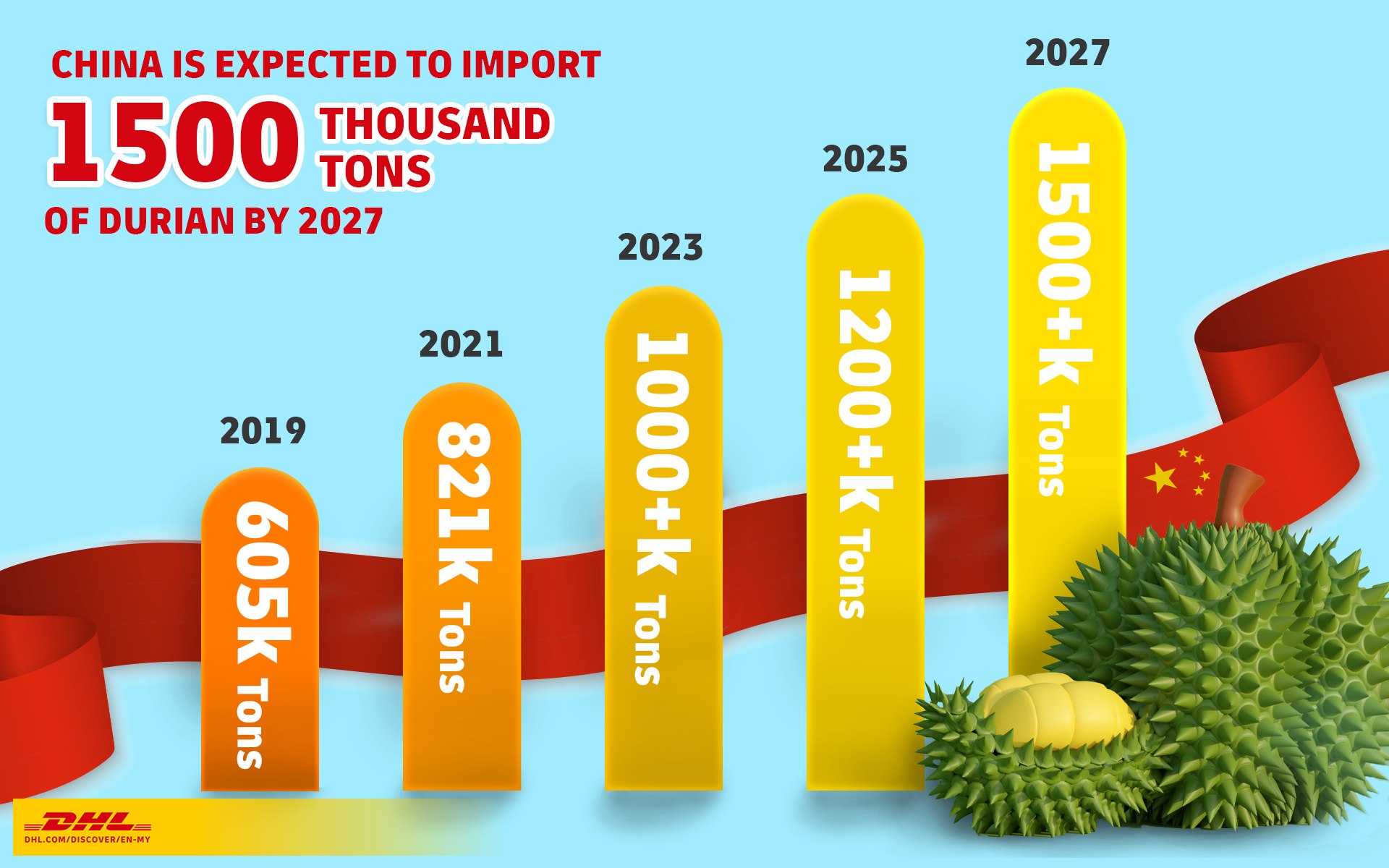Grow your business with the Discover newsletter
Logistics advice & insights straight to your inbox
Subscribe now
The past few years have been highly profitable for Malaysian durian farmers and exporters. Although the durian industry has faced a hard hit due to the pandemic in 2020, it did not affect Chinese consumer’s love for the fruit. Instead, imports have seen a continuous increase during this period, as reported by the China International Import Expo.

The Musang King, a famous Malaysian variety, affirmed its spot as the best durian in the world thanks to its smooth, creamy texture and bittersweet taste. Along with the durian fruit, the pulp and paste continue to be in high demand. These different forms of durian can be used for a variety of purposes, to make desserts and drinks. For example, restaurants, hotels and food processors order high volumes of the fruit – driving sales up.
After a considerable boost in the country's durian export between 2016 and 2020, Malaysia continues to expand its harvest area. The main reason for this is the increasing demand from top importers like Hong Kong, China and Singapore.
Hong Kong is one of the major destinations for Malaysian durian exporters. In fact, Hong Kong has long been the leader in durian imports. According to AgroTex Global, Hong Kong reportedly consumed US$13.8 million worth of Malaysian durian exports in 2020, accounting for 39.8% of the total export value.
It is worth noting that Hong Kong has a net import policy as a form of accurate trade representation. This policy makes Hong Kong the largest durian exporter, as over 90% of imported durians are re-exported. A good example of this is the Trade Maps report from 2016, which shows an import volume of 318.80 million and a whopping 301.8 million kilogrammes in re-export.
With almost all durian production coming from Central Malaysia, shipping durians from Malaysia to Hong Kong presents many logistical challenges. Fortunately, more companies are working with Malaysia's international delivery service provider, DHL Express, as part of the Durian Express initiative. This way, companies can meet overseas demand with next-day delivery in less than 24 hours.


According to Produce Report, from 2010 to 2019, durian consumption in China increased rapidly with an average annual growth rate of more than 16%. China’s previous record of having the highest import volume of 604,500 tonnes in 2019 and highest import volume of US$2.3 billion in 2020 have both been broken with the trend in 2021. With a volume over 821,500 tonnes, China surpassed their record with a whopping US$4.2 billion in import value, a 42.7% increase from 2020, reported Yicai Global. This maintains China’s position in the fresh durian market.

Even though Malaysia is not the biggest exporter of durians to China, the Musang King variety – a variety not grown in other countries outside of Malaysia – is particularly valued in China. This means Malaysia continues to be an important export country for durians for consumers in China.
In addition, durian exporters shipping from Malaysia to China must adhere to the country’s strict rules and regulations. They also have to prepare a list of documents before exporting durians to China. All durian fruit pulps must be frozen, stored, and transported in vacuum-sealed bags with traceable labelling to avoid counterfeiting.

Singapore ranks third in the list of importers of Malaysian durians. According to a report by Business Today, over 20 million kilograms of durians are exported to Singapore annually, of which over 85% originate from Malaysia.
An article by The Malaysian Reserve reported that that Singapore's durian imports peaked at 22,900 tonnes of durians in 2013. This shows how passionate Singaporeans are towards durians, and durian exporters from Malaysia can consider exporting more to this neighbouring country if demands from Hong Kong and China fall.
Although the durian fruit remains an acquired taste, it's rapidly growing in popularity. Also, despite the wide range of challenges recently, the fondness for the sweet delicacy continues to grow. More people turn to the "King of fruits" as durian remains a local favourite. People from Hong Kong, China and Singaporelove the pungent fruit. Along with Malaysia, other top exporters of durian like Indonesia and Thailand allow this demand to be constantly met. Ultimately, Malaysian durian farming may slow down, but it will recover from the price shock.